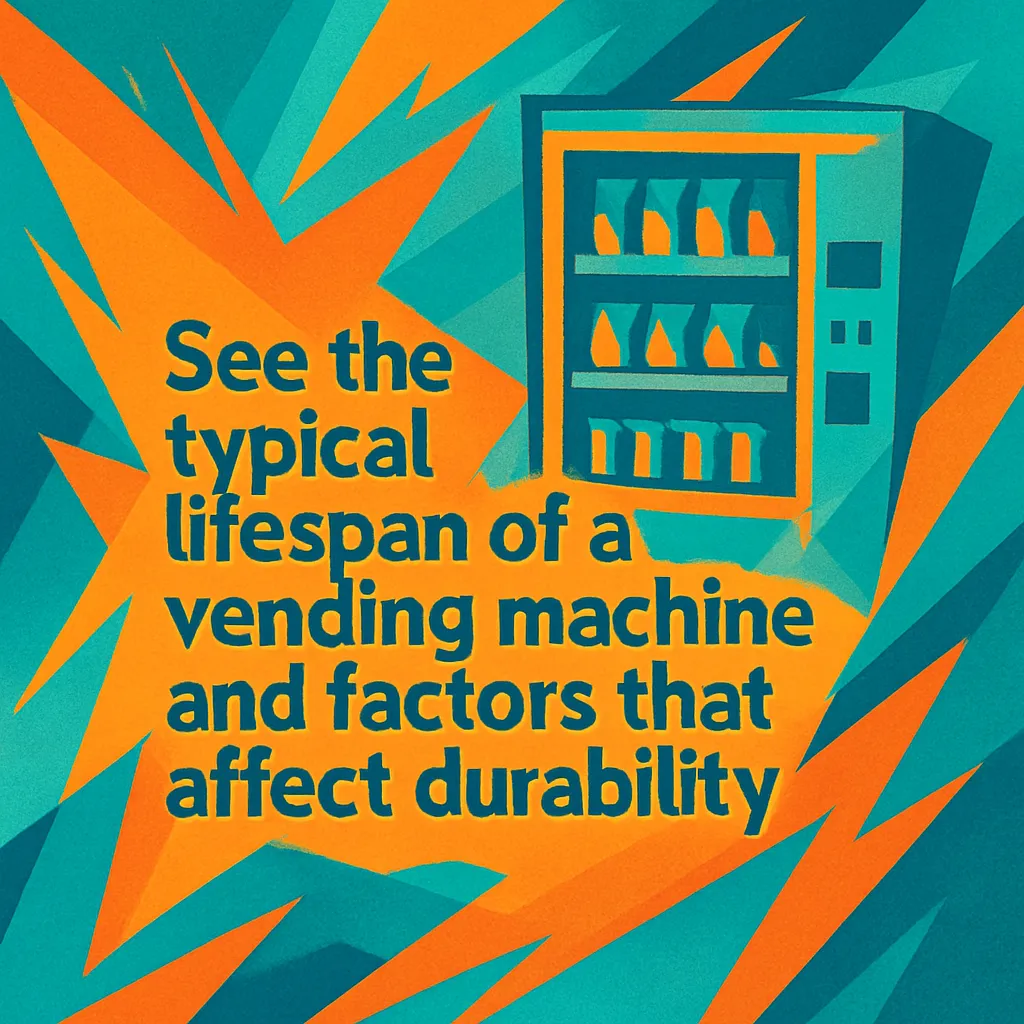How Long Do Vending Machines Last? Durability & Lifespan
See the typical lifespan of a vending machine and factors that affect durability, from maintenance to environmental conditions.
Back to Vending FAQs ResourcesSee the typical lifespan of a vending machine and factors that affect durability, from maintenance to environmental conditions.
Back to Vending FAQs ResourcesUnderstanding the factors influencing a vending machine's lifespan is key to maximizing your investment and minimizing downtime. From routine care to placement, every detail counts.
![]() Average lifespan of 10-15 years with proper care
Average lifespan of 10-15 years with proper care
![]() Regular maintenance prevents premature wear and tear
Regular maintenance prevents premature wear and tear
![]() Environmental factors and usage impact durability
Environmental factors and usage impact durability

The lifespan of a vending machine is a crucial consideration for any business or location owner looking to install one. On average, a well-maintained vending machine can operate efficiently for 10 to 15 years, with some models even exceeding 20 years. This impressive durability is a testament to their robust design, but actual longevity can vary significantly based on several key factors.
Several elements play a vital role in determining how long your vending machine will last. These include the quality of the original manufacturing, the frequency and thoroughness of maintenance, the environment in which it operates, and the volume of daily transactions. Machines from reputable manufacturers tend to offer superior construction and more readily available spare parts for long-term maintenance. Understanding these aspects can help in making informed decisions about procurement and ongoing care.
Regular maintenance is perhaps the single most important factor in extending a vending machine's life. This includes routine cleaning, checking for wear and tear on moving parts, and ensuring all electrical and cooling systems (for refrigerated units) are functioning optimally. For instance, a vending machine in a high-traffic warehouse environment will experience more stress than one in a low-volume office. High usage means more wear on the dispensing mechanisms, coin and bill acceptors, and payment systems. Conversely, neglecting minor issues can lead to bigger, more expensive problems down the line, potentially forcing an early replacement. While many locations enjoy free vending machine options where the vendor handles all maintenance and stocking, it's still beneficial to keep the operational lifespan in mind.
The operational environment is also critical. Machines placed outdoors or in areas with extreme temperature fluctuations will generally degrade faster than those in climate-controlled indoor settings. Exposure to dust, humidity, or direct sunlight can accelerate the aging process of internal components and external finishes. Modern machines often come with advanced features such as energy-efficient components, smart telemetry for remote monitoring, and cashless payment systems. While these add to the initial cost, they can reduce operational expenses and extend the functional life by proactively identifying issues before they become critical. When considering an upgrade, it's often a balance between repair costs, energy efficiency, and consumer demand for modern conveniences.
Most modern vending machines are designed to last between 10 to 15 years with proper maintenance, though some can exceed 20 years.
Key factors include manufacturer quality, maintenance frequency, operational environment (indoor/outdoor), usage volume, and regular upkeep.
Yes, simpler machines might last longer with less complex parts. Refrigerated or frozen food machines, with more intricate cooling systems, might require more frequent attention.
Regular maintenance is crucial. Routine cleaning, checking electrical components, and servicing mechanical parts can significantly extend a machine's operational life and prevent costly breakdowns.
Outdoor placement can expose machines to harsh weather, leading to faster wear and tear. Specialized outdoor-rated machines are more durable but still require extra care.
Machines in high-traffic locations experience more wear on components like coin mechanisms, bill validators, and dispensing motors, potentially shortening their lifespan without diligent maintenance.
Consider replacement when repair costs become frequent and exceed a significant percentage of the machine's value, or when it lacks modern features like cashless payment or energy efficiency.
Generally, yes. Older models often consume more energy than newer, ENERGY STAR-rated machines, which can impact operational costs over time.
Yes, as machines age, certain proprietary or specialized parts can become obsolete or difficult to source, making repairs more challenging and expensive.
Sometimes, upgrading components like control boards or payment systems can revitalize an older machine, enhancing its functionality and extending its usability, but it's not always a full solution for an aging frame or compressor.